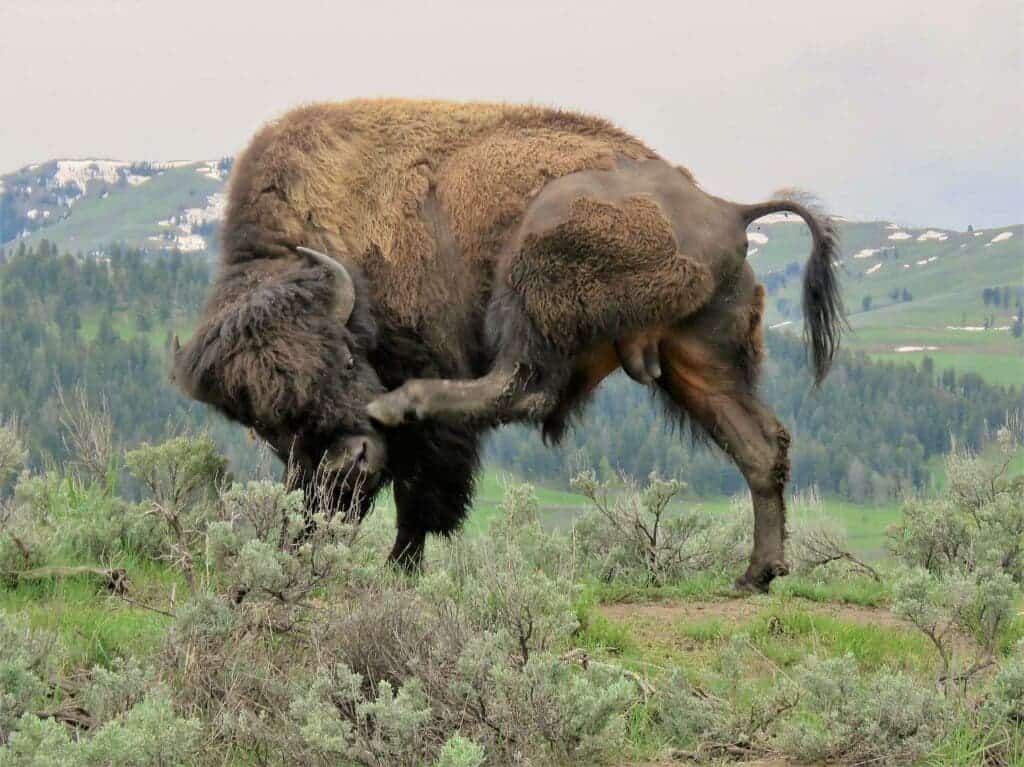Researchers at the Texas A&M University report that today’s North American bison carry the genetic fingerprints of domestic cattle. In essence, these once-wild beasts were brought back from the brink of extinction in the late 1800s through partial hybridization with livestock.

The beasts carry multiple small but clearly-identifiable regions of DNA from domestic cattle, according to a new study.
Just semi-wild
“Today, it appears that all major public, private, tribal, and non-governmental organization bison herds have low levels of cattle genomic introgression,” said Sam Stroupe, a Ph.D. student at Texas A&M and first author of the study. “This includes Yellowstone National Park, as well as Elk Island National Park in Canada, which were thought to be free of cattle introgression based on previous genetic studies.”
“This comparative study clearly documents that the people responsible for saving the bison from extinction in the late 1800s are also responsible for introducing cattle genetics into this species,” said co-lead researcher James Derr.
A new study published in the journal Scientific Reports has revealed the strongest evidence to date that all bison in North America carry multiple small, but clearly identifiable, regions of DNA that originated from domestic cattle.
The study builds on previous work performed by Derr’s team, which hinted that only a few wild bison herds in North America were lacking domestic cattle genes. As technology improved since the last study, the team was curious to double-check their findings — and found that even those few herds were, in fact, hybrids as well.
However, the findings aren’t all bad. The team explains that conservation efforts might actually benefit from the results, as herds of wild bison have historically been isolated to prevent accidental hybridization with cattle; since this goal is no longer possible, it will give conservationists much more flexibility in how and where they can work with bison.
The shared ancestry identified in the study is the product of multiple hybridization events between North American bison and cattle over the last 200 years, the researchers report. After the bison population crash of the 1800s, America was finding itself in a shortage of beef. Local farmers attempted to cross-breed domestic cattle and bison to create a new breed that would grow larger and yield more meat. Such a hybrid was produced, but without the intended increase in muscle mass, so cross-breeding efforts were largely abandoned. Still, this resulted in quite a few man-made hybrids.
As the USA was realizing that bison were on the brink of extinction, a national effort began to try and preserve existing populations while helping the species recover. However, virtually the only animals available to establish conservation herds were the hybrids developed earlier.
“As a result, these well-intentioned hybridization efforts leave a complicated genetic legacy,” Davis said. “Without these private herds, it is possible bison would have become extinct. At the same time, this intentional introduction of interspecies DNA resulted in remnant cattle footprints in the genomes of the entire contemporary species. “We now have the computational and molecular tools to compare bison genomic sequences to thousands of cattle and conclusively determine the level and distribution of domestic cattle genetics in bison that represent each of these historical bison lineages”.
The findings should inform conservation efforts going forward, and, the team believes, gives us context to better understand these animals, their history, and where they fit in the wild and within our economies. It’s important to note, the team adds, that while hybridizations do occur naturally, the story of the bison was a purposeful, man-made event closely tied to the near-extinction of the bison due to commercial hunting.
One important consequence of these results is that conservationists and bison ranches can now tailor new strategies to better promote and maintain genetic diversity among animals, improving the species’ overall health and ensuring its continued survival.
The paper “Genomic evaluation of hybridization in historic and modern North American Bison (Bison bison)” has been published in the journal Scientific Reports.






